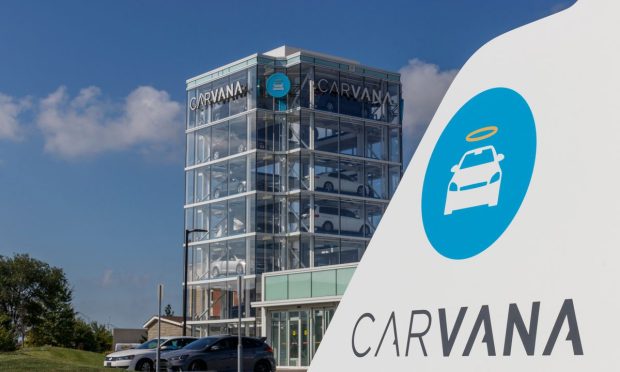Supply Chain Headwinds Continue to Pressure Online Car Marketplaces

When the chips are down, or at least in short supply, the connected economy suffers, at least a bit.
It’s well known that chips have made newer automobiles harder to come by, and so that’s given a tailwind to used vehicle purchases.
But even as some of the online marketplaces are posting solid eCommerce growth metrics, there are some macro headwinds in place.
Supply chain pressures are pinching some of the margins and at least some of the near-term prospects of what we might term the “online car space” — where platforms bring buyers and sellers together, yes, but also have some vertical integration that blends other services into the connected experience.
Two cases in support of that argument: Carvana and Vroom, two of the more prominent online marketplaces that are part of this burgeoning sector. Both companies have seen the rewards of increased clamor for the digital shift to buying cars online, but they also have seen net losses increase as they invest in infrastructure and pay higher prices for the vehicles they sell.
At a high level, demand for cars remains strong. Supply is less than plentiful to meet that demand, and in some commentary from management — depending on where you look — pricing has not been enough to offset higher costs and margin pressures.
Widening Losses
The pressures show up in the numbers. Adjusted EBITDA, a rough measure of cash flow, was a negative $119 million for Vroom versus negative $56 million a year ago. EBITDA for Carvana was a negative $93 million in the latest fourth quarter, widening from a negative $70 million last year.
A useful gauge of how the near-term prospects might be viewed — by investors, certainly — can be found in the fact that in recent weeks, the share prices of Carvana and Vroom are down more than 40% year to date. Carvana and Vroom both get some of their business from buying vehicles from individuals, which has been an activity marked by higher prices. Carvana said in its earnings details on the current period that “we expect the first quarter to be a tougher quarter as a result of the supply chain challenges brought on by the omicron variant and severe winter storms and the recent rapid increase in short-term interest rates.”
Vroom, for its part, noted that the activities related to selling cars on its platforms — namely, reconditioning — was marked by costs and constraints amid labor shortages.
Vroom saw the average selling price per unit increase to $33,699 in the latest period from $24,909 last year. Gross profit per eCommerce vehicle unit slipped to $473 from $878 last year.
Read more: Vroom Slides as Vehicle Pricing Fails to Offset Higher Acquisition Costs
While these firms are seeing the pinch of various supply chain pressures, they are busy building out logistics and capabilities. Those are the value-adds that extend beyond the core online marketplaces, notably with the last-mile functions where the cars are delivered to end users.
Carvana, for example, said that it would increase the reach of its inspection and reconditioning centers (IRCs). The company said in its fourth quarter results that it will seek to have IRCs within 100 miles of 78% of the U.S. population from about 32% today. That will reduce shipping times and broaden the reach of same-day and next-day delivery.
See more: Carvana Says Purchase of Auction Company, Facilities Will Expand Next-Day Delivery Capability
Vroom, too, is continuing to build out its logistics capabilities, but the pressures already in place are telling. The company said in commentary on its conference call that “market rate inflation” (which would be a read-across for labor and wage inputs) caused a headwind of about $140 per transaction as the company doubled its reconditioning centers from 19 at the end of 2020 to 38 by the end of last year. As many as 60% of the company’s eCommerce deliveries were tied to the company’s last-mile program, which indicates that some of those labor costs will continue to be a challenge.
Building out for the longer term, then, will have some elevated near-term costs.
